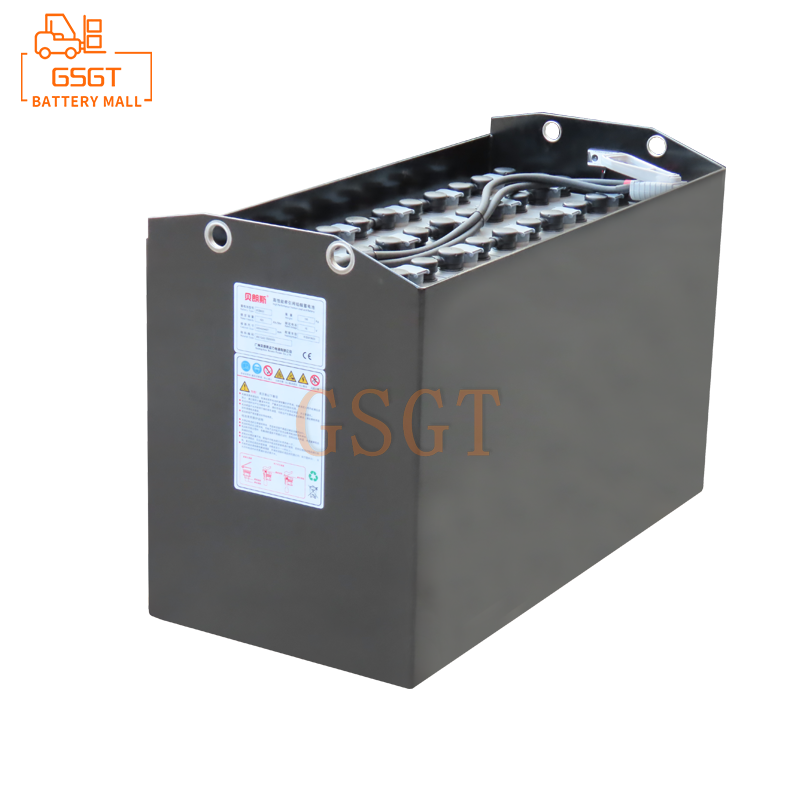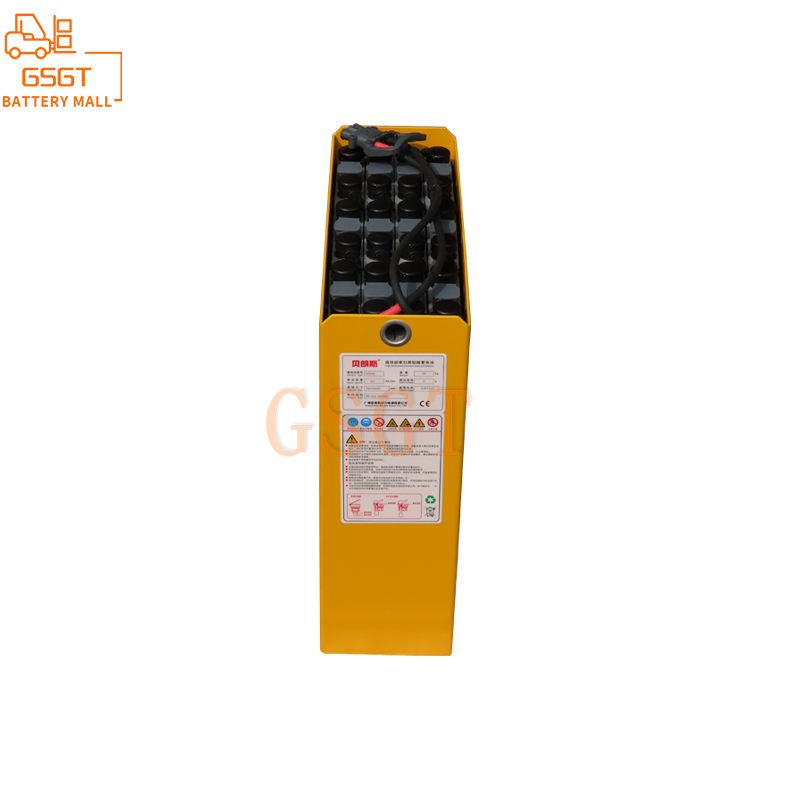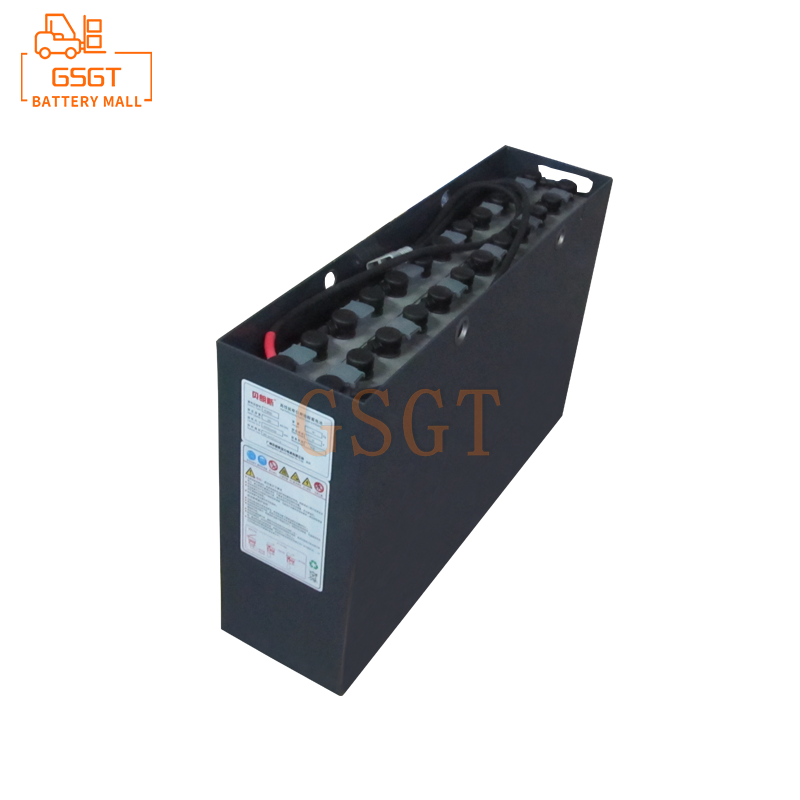Time:2025-04-17 10:08:21
Browse:473
Forklift lead-acid battery status
In the field of material handling, forklift is the key equipment, and lead-acid batteries have long occupied the dominant position of forklift power source. Lead-acid battery technology is mature, with relatively low cost, high rate discharge performance, adapt to harsh conditions and other advantages, which makes it widely used in forklift applications. In warehousing and logistics centers, manufacturing factories and other places, a large number of forklifts rely on lead-acid batteries to provide power to complete heavy tasks such as cargo loading and unloading, handling, and stacking. According to relevant industry data, at present, the proportion of forklifts on the market equipped with lead-acid batteries is as high as 70%-80%, and its importance in the field of forklift power is self-evident.
Low-carbon transition challenge
Raw material link
Lead, as the core raw material of lead-acid batteries, has high energy consumption and serious pollution in its production process. From the beginning of lead mining, lead concentrate needs to be extracted through multiple processes such as crushing, grinding and flotation, which consumes a lot of electricity, water resources and chemical agents. Subsequent lead concentrate smelting into fine lead, using fire smelting or wet smelting process, fire smelting sintering - blast furnace smelting will produce a large number of lead dust, sulfur dioxide and other pollutants, wet smelting is relatively environmentally friendly, but also faces high energy consumption problems. Moreover, the uneven distribution of global lead mineral resources, some regions rely on imports, and the stability of resource supply is vulnerable to the international political and economic situation, which poses a potential threat to the low-carbon transformation of the lead-acid battery industry.
Recycling dilemma
The imperfect recovery system of lead-acid battery is the key factor hindering the low carbonization. At present, although China has established some regular recycling channels, a large number of informal recyclers flood the market. When informal recyclers disassemble lead-acid batteries, they lack professional equipment and environmental protection measures, and their simple and crude disassembly methods lead to lead leakage and free discharge of electrolyte, causing serious pollution to soil and water. Even formal recycling enterprises are faced with technical bottlenecks, the traditional fire recovery energy consumption is high, and the recovery process of lead volatilization loss is large; Although wet recycling can reduce energy consumption and pollution, the process is complex and the recovery cost is high, which limits the large-scale development of the recycling industry, and it is difficult to meet the demand for large-scale recycling of lead-acid batteries, affecting the process of low-carbon transformation.
Product performance bottleneck
The energy density of lead-acid batteries is low, which means that forklifts need to be equipped with a large number of batteries to achieve a certain range, increasing the weight of the vehicle and energy consumption. Under the requirements of low carbon, improving battery life and reducing energy consumption have become contradictory points. In addition, the lead-acid battery charging time is long, generally takes 6-8 hours to be full, frequent charging not only affects the efficiency of forklift trucks, but also needs to invest more power resources, which is contrary to the development direction of low-carbon and efficient. At the same time, its cycle life is limited, usually after 300-500 charge and discharge cycles, the performance is significantly reduced, and the battery needs to be replaced, which both increases the cost of use, and generates more waste batteries, increasing the environmental burden, and is not conducive to low-carbon transformation.
Low carbon transition opportunities
Promote technological innovation
New lead-acid battery technology continues to emerge, bringing the dawn of low carbonization. For example, the use of graphene composite additive technology can improve the conductivity of lead-acid batteries and the utilization of active substances, increase the energy density by 10%-20%, and extend the cycle life by 20%-30%. In addition, the rapid development of intelligent charging technology, through the optimization of the charging algorithm, can accurately control the charging current and voltage according to the state of the battery, to achieve fast charging, shorten the charging time to 2-3 hours, reduce the charging energy consumption by 15%-20%. In terms of recycling technology, biological metallurgy technology is emerging, the use of microorganisms to lead ore or waste lead-acid batteries in the oxidation, reduction and other effects, to achieve lead extraction and recovery, compared with the traditional process, energy consumption is reduced by 30%-40%, pollution is greatly reduced, for the lead-acid battery low-carbon life cycle management to provide strong technical support.
Policy support oriented
Governments have issued encouraging policies to promote the low-carbon transformation of lead-acid batteries for forklifts. In China, strict energy consumption quota standards have been implemented for lead-acid battery manufacturers to promote enterprises to increase investment in energy saving and emission reduction technology transformation. At the same time, special subsidy funds have been set up to support lead-acid battery recycling enterprises to build standardized recycling networks and advanced processing facilities. The European Union has formulated more stringent battery directives, regulating the development of the lead-acid battery industry from multiple dimensions such as environmental protection, safety, and energy efficiency, requiring improved battery recycling and utilization rates to reduce carbon emissions in the production process. The guidance and standardization of policies create a good policy environment for the low-carbon transformation of the industry, encourage enterprises to take the initiative to innovate and accelerate the pace of transformation.
Market demand pull
With the enhancement of consumer awareness of environmental protection and corporate social responsibility awareness, the market demand for low-carbon forklifts and supporting lead-acid batteries is growing. In order to create a green supply chain, logistics enterprises give priority to low-carbon environmental protection forklift equipment, manufacturing enterprises in order to meet their own energy saving and emission reduction goals, but also tend to purchase forklifts with low carbon lead-acid batteries. According to market research institutions predict that in the next five years, the market share of low-carbon forklift lead-acid batteries will grow at an annual rate of 15%-20%. This change in market demand has prompted lead-acid battery manufacturers to adjust their product structure, increase investment in low-carbon product research and development and production, and promote the transformation and upgrading of the entire industry to a low-carbon direction.
Conclusion
The low-carbon transformation of forklift lead-acid batteries faces many challenges, but also contains abundant opportunities. By overcoming the problems of raw material production, recycling and product performance and other key links, with the help of technological innovation, policy support and the strong driving force of market demand, the lead-acid battery industry is expected to achieve green and low-carbon transformation, while meeting the demand for efficient and environmental protection development of the forklift industry, contributing to the global energy conservation and emission reduction goals, and ushering in new development opportunities in the wave of low-carbon economy. Continues to play an important role in the field of material handling power.

$2450

$1270

$2140

$1060

MESSAGE
Professional And Efficient
Security
Affordable Price
Professional Services